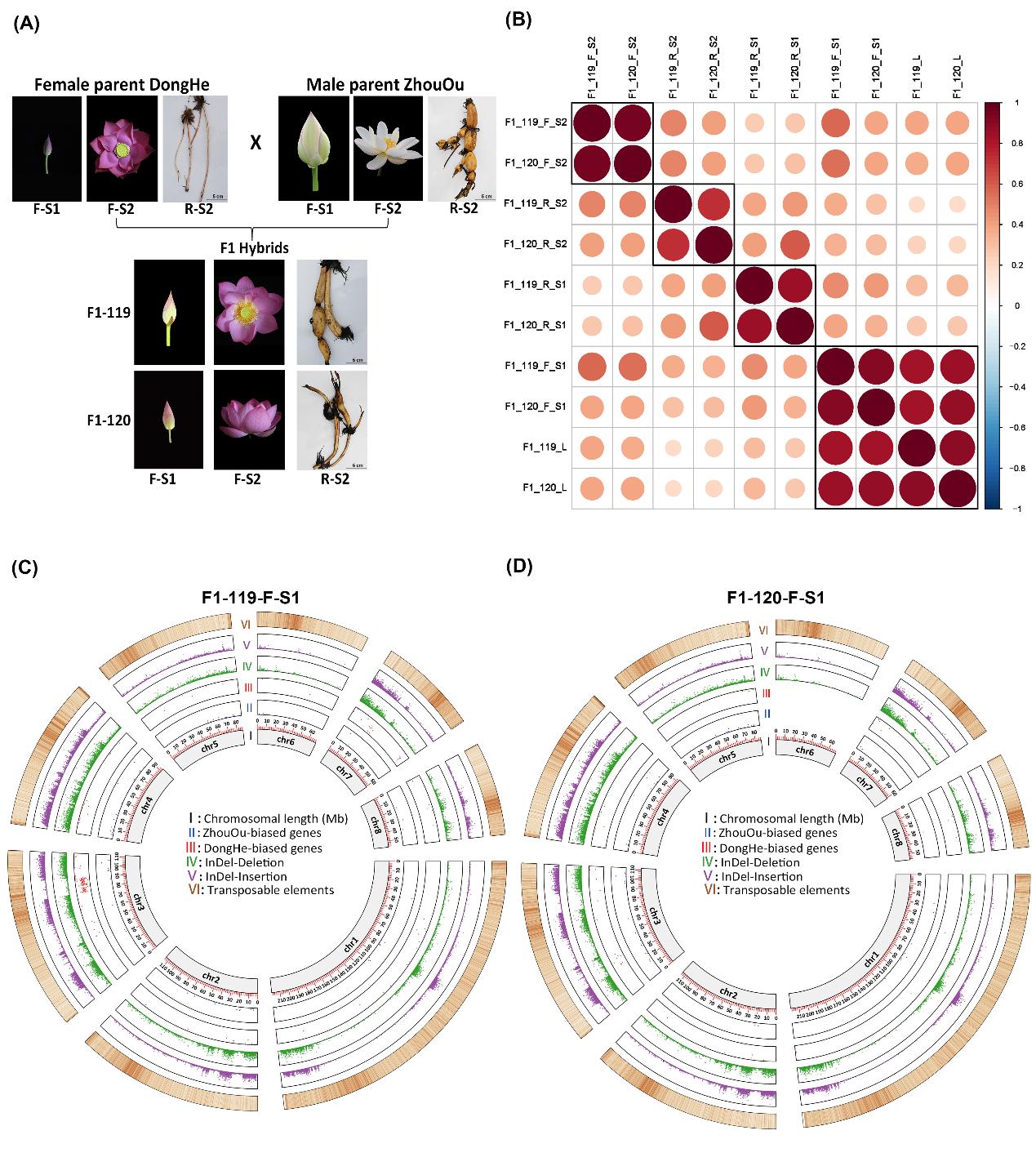Lotus (Nelumbo nucifera) can be divided into two ecotypes with different characteristics adapting to various climatic regions, termed as tropical lotus with whip-like, long and thin rhizome and temperate lotus with enlarged and starch-enriched rhizome, respectively. The rhizome derived from underground stems expansion in temperate lotus is a vital phenotypic innovation during the evolutionary process.
In previous studies, some key genes and pathways affecting lotus enlargement have been identified by transcriptomics. However, it is unclear how genetic changes, particularly cis-regulatory variations, can cause expression divergence of key genes that subsequently contribute to the phenotypic variations of lotus.
To understand how cis-acting variations between the two lotus ecotypes promote phenotypic differentiation and adaptive evolution, researchers from the Wuhan Botanical Garden of the Chinese Academy of Sciences (CAS) used allele-specific expression (ASE) analysis relying on whole-genome resequencing and transcriptome sequencing data from parents (ZhouOu ♂, DongHe♀) and F1 hybrids with three tissues (flowers, leaves and rhizomes) to study cis-acting regulatory mechanism.
They found that cis-acting elements (promoters) from tropical lotus were more active than those from temperate lotus, because genes of tissues in F1s showed strong consistent ASE biased towards the tropical line. Compared to genes with allelic expression bias, genes with unbiased expression in offspring evolved more slowly in their promoter regions.
The researchers further uncovered that cis-acting regulation has vital effects on genes in metabolic and phytohormone-related pathways in the rhizome which participates in adaptive phenotypic differentiation between two lotus ecotypes.
Overall, this study reveals that cis-regulatory changes between the two parents can have a profound impact on ecotypic differentiation, particularly rhizome enlargement.
Results were published in an article in Plant Molecular Biology entitled "Biased allelic expression in tissues of F1 hybrids between tropical and temperate lotus (Nelumbo nucifera)".
This research was supported by grants from the National Natural Science Foundation of China, the Youth Innovation Promotion Association of CAS, the Strategic Priority Research Program of CAS, the Bureau of Landscaping and Forestry of Wuhan Municipality, among others.







